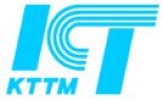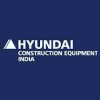Filter interviews by
Fichtner Consulting Engineers Electrical Site Engineer Interview Questions and Answers for Experienced
Fichtner Consulting Engineers Electrical Site Engineer Interview Experiences for Experienced
2 interviews found
I appeared for an interview in Mar 2025, where I was asked the following questions.
- Q1. What do you consider essential for starting GIS erection work?
- Ans.
Essential steps for starting GIS erection work include planning, site assessment, and ensuring safety compliance.
Conduct a thorough site survey to assess ground conditions and accessibility.
Ensure all necessary permits and approvals are obtained before starting work.
Develop a detailed project plan outlining timelines, resources, and responsibilities.
Verify that all materials and equipment meet project specifications an...
- Q2. What are the procedures involved in transformer erection?
- Ans.
Transformer erection involves site preparation, assembly, installation, and testing to ensure safe and efficient operation.
Site Preparation: Clear the area and ensure proper drainage to prevent flooding.
Foundation: Construct a solid foundation to support the transformer weight and dimensions.
Assembly: Assemble the transformer components, including bushings and tap changers, as per manufacturer specifications.
Installati...
- Q3. Equipment ratings
I applied via Recruitment Consulltant and was interviewed in Mar 2024. There were 2 interview rounds.
(1 Question)
- Q1. Equipment erection procedure and testing procedures
- Ans.
Equipment erection involves following a specific procedure to ensure proper installation and testing procedures are carried out to verify functionality.
Equipment erection procedure involves following manufacturer's guidelines and specifications.
Testing procedures include conducting insulation resistance tests, continuity tests, and functional tests.
Ensure all safety precautions are followed during equipment erection an...
(1 Question)
- Q1. GIS installation procedure and vaccum procedure dew point analysis etc
Top trending discussions






Interview questions from similar companies

I applied via Naukri.com and was interviewed before May 2018. There were 5 interview rounds.
Interview Questionnaire
4 Questions
- Q1. Explain about open loop & close loop operation in hydraulic system.
- Ans.
Open loop and closed loop are two modes of operation in hydraulic systems.
Open loop operation: The hydraulic system operates without feedback control. The output is not adjusted based on the system's performance.
Closed loop operation: The hydraulic system uses feedback control to adjust the output based on the system's performance.
Open loop systems are simpler and less expensive, but they lack precision and accuracy.
Cl...
- Q2. Explain about Starting circuit.
- Ans.
The starting circuit is responsible for initiating the engine's operation.
The starting circuit consists of components such as the battery, starter motor, ignition switch, and solenoid.
When the ignition switch is turned on, it sends a signal to the solenoid, which then engages the starter motor.
The starter motor uses electrical energy from the battery to turn the engine's crankshaft, starting the combustion process.
Once...
- Q3. Why should we hire you ?
- Ans.
I am a highly skilled and experienced service engineer with a proven track record of successfully troubleshooting and resolving complex technical issues.
I have a strong technical background and extensive experience in diagnosing and repairing equipment.
I am a quick learner and can adapt to new technologies and processes easily.
I have excellent communication skills and can effectively communicate with customers and team...
- Q4. What is your core values ?
- Ans.
My core values include integrity, accountability, and continuous learning.
Integrity: I believe in always doing the right thing, even when no one is watching.
Accountability: I take ownership of my actions and responsibilities.
Continuous learning: I strive to constantly improve my skills and knowledge.
Example: I once discovered a mistake in a project I was working on, and instead of ignoring it, I took responsibility and...
Interview Preparation Tips
Experience: Questions based upon technical knowledge like engine, basic electrical & basic hydraulics.
General Tips: You should have deep knowledge about hydraulics system & DC electrics.
Skills: Communication, Body Language, Problem Solving, Analytical Skills, Leadership, Presentation Skills, Time Management, Decision Making Skills
Duration: 1-3 Months

I applied via Walk-in and was interviewed in Jul 2020. There was 1 interview round.
Interview Questionnaire
1 Question
- Q1. Are you role & responsibility in previous company
Interview Preparation Tips

Interview Questionnaire
5 Questions
- Q1. Tell me about yourself?
- Ans.
I am a Service Engineer with expertise in troubleshooting and repairing complex machinery.
Experienced in diagnosing and resolving technical issues in industrial equipment
Proficient in using diagnostic tools and software to identify problems
Skilled in performing maintenance and repairs on various types of machinery
Strong problem-solving and communication skills
Ability to work independently and under pressure
Example: Suc...
- Q2. Why hydraulics Ram has different speed in head side and rod Side?
- Ans.
The speed difference in a hydraulic ram is due to the difference in effective areas on the head side and rod side.
The head side of the ram has a larger effective area, resulting in slower speed.
The rod side of the ram has a smaller effective area, resulting in faster speed.
This speed difference is a result of the hydraulic pressure acting on different areas.
The speed ratio between the head side and rod side can be calc...
- Q3. What is the purpose of pressure relief valve?
- Ans.
A pressure relief valve is used to protect equipment and systems from excessive pressure by releasing the pressure when it exceeds a certain limit.
Prevents damage to equipment and systems
Ensures safety of personnel
Maintains system integrity
Prevents explosions or ruptures
Relieves excess pressure by opening and releasing fluid or gas
Commonly used in boilers, pressure vessels, pipelines, and hydraulic systems
- Q4. What is orifice?
- Ans.
An orifice is a small opening or hole through which fluid or gas can flow.
Orifices are commonly used in various industries, such as plumbing, engineering, and manufacturing.
They are often used to control the flow rate of fluids or gases.
Orifices can be found in devices like nozzles, valves, and flow meters.
The size of an orifice determines the flow rate and pressure drop across it.
Examples of orifices include the tiny ...
- Q5. Why you looking for a job change?
- Ans.
I am looking for a job change to explore new opportunities and challenges.
Seeking career growth and advancement
Wanting to work in a different industry or with different technologies
Desire for a better work-life balance
Relocation or proximity to family
Unsatisfactory current job situation
Interview Preparation Tips
And the technical round is very simple as always. It consists of mainly Basics.
So don't worry...!!
Best of Luck...!!

I applied via Naukri.com and was interviewed before Apr 2021. There were 2 interview rounds.
(1 Question)
- Q1. Basics Hydraulics, Basic electrical, Sensors, PLC
(8 Questions)
- Q1. What are your strengths and weaknesses?
- Q2. Why are you looking for a change?
- Q3. Why should we hire you?
- Q4. What are your salary expectations?
- Q5. What is your family background?
- Q6. Share details of your previous job.
- Q7. Where do you see yourself in 5 years?
- Q8. Tell me about yourself.
Interview Preparation Tips
- Hydraulics

I applied via Naukri.com and was interviewed in Jan 2023. There were 2 interview rounds.

(2 Questions)
- Q1. What is the AC DC transformer moter automation
- Ans.
AC DC transformer motor automation is a process of controlling and regulating the operation of a motor using an AC DC transformer.
AC DC transformer motor automation involves converting AC power to DC power using a transformer.
The DC power is then used to control and regulate the operation of a motor.
This automation process allows for efficient and precise control of motor speed, torque, and direction.
Examples of AC DC ...
- Q2. Technical question AC
Interview Preparation Tips

I applied via Approached by Company and was interviewed before Feb 2023. There were 2 interview rounds.
(1 Question)
- Q1. Electronic qualification
(2 Questions)
- Q1. Electronic information
- Q2. Transistor and electrical supply and earthing
Interview Preparation Tips

Interview Questionnaire
1 Question
- Q1. Basics of switch gear systems

I applied via Naukri.com
Interview Questionnaire
2 Questions
- Q1. Basics hydraulics, Basic electricals, Hydraulic Schematic. Basics in engine.
- Q2. Every question was on basics things.
Interview Preparation Tips
Fichtner Consulting Engineers Interview FAQs
Some of the top questions asked at the Fichtner Consulting Engineers Electrical Site Engineer interview for experienced candidates -
Tell us how to improve this page.
Fichtner Consulting Engineers Interviews By Designations
- Fichtner Consulting Engineers Design Engineer Interview Questions
- Fichtner Consulting Engineers Electrical Site Engineer Interview Questions
- Fichtner Consulting Engineers Graduate Trainee Interview Questions
- Fichtner Consulting Engineers Engineer Interview Questions
- Fichtner Consulting Engineers Deputy Manager HR Interview Questions
- Fichtner Consulting Engineers Junior Engineer Civil Interview Questions
- Fichtner Consulting Engineers Project Engineer Interview Questions
- Fichtner Consulting Engineers Quality Engineer Interview Questions
- Show more
Interview Questions for Popular Designations
- Site Engineer Interview Questions
- Civil Site Engineer Interview Questions
- Site Supervisor Interview Questions
- Site Incharge Interview Questions
- Senior Site Engineer Interview Questions
- Civil Site Supervisor Interview Questions
- Site Engineer Mechanical Interview Questions
- Senior Civil Site Engineer Interview Questions
- Show more
Fichtner Consulting Engineers Electrical Site Engineer Interview Process for Experienced
based on 2 interviews
Interview experience
Interview Questions from Similar Companies

Fichtner Consulting Engineers Electrical Site Engineer Reviews and Ratings
based on 1 review
Rating in categories
|
Design Engineer
48
salaries
| ₹3 L/yr - ₹7.2 L/yr |
|
Assistant Chief Engineer
26
salaries
| ₹7 L/yr - ₹17.8 L/yr |
|
QA QC Engineer
22
salaries
| ₹5.3 L/yr - ₹8.4 L/yr |
|
Deputy Chief Engineer
21
salaries
| ₹11.8 L/yr - ₹21 L/yr |
|
Senior Design Engineer
21
salaries
| ₹5 L/yr - ₹12.7 L/yr |

Gilbarco Veeder Root

Kirloskar Toyota Textile Machinery

HYT Engineering

L&T–MHI Power Boilers
- Home >
- Interviews >
- Fichtner Consulting Engineers Interview Questions >
- Fichtner Consulting Engineers Electrical Site Engineer Interview Questions for Experienced












